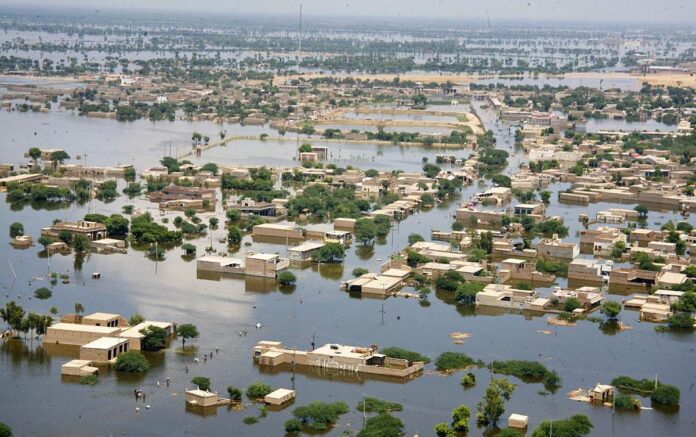Federal Minister for Planning, Development and Special Initiatives Ahsan Iqbal said on Friday that Pakistan suffered estimated damages of Rs822 billion (around $2.9 billion) and over 1,000 deaths as a result of the recent floods, which caused widespread destruction to homes, infrastructure, and essential services.
Speaking at a press conference, the minister said the government had completed an initial flood damage assessment report and submitted it to the prime minister. He clarified that the figure represents direct damages, while a detailed Post-Disaster Needs Assessment (PDNA) is underway to calculate the total economic impact.
According to the report, the agriculture sector suffered the greatest loss at Rs430 billion, followed by infrastructure damage estimated at Rs307 billion. A total of 312,000 houses were affected nationwide — including 213,000 in Punjab, 6,370 in Balochistan, 3,222 in Khyber Pakhtunkhwa, 3,677 in Azad Jammu and Kashmir and Gilgit-Baltistan, and 332 in Sindh.
Infrastructure losses included damage to 2,811 kilometres of roads, over 2,200 educational institutions, 250 health facilities, and 866 water supply systems. The floods also destroyed over 2,200 livestock and damaged major crops including 3.4 million bales of cotton, one million tonnes of rice, and up to 3.3 million tonnes of sugarcane.
Despite the damage, Iqbal pointed to signs of economic recovery. Inflation fell to 4.2% in the first quarter (July–September) of FY2025–26, compared to 9.2% a year earlier. The Federal Board of Revenue (FBR) collected Rs2,884 billion, up 12.5% from Rs2,563 billion last year, while the Pakistan Stock Exchange reached a historic high of 169,000 points on October 3.
Credit to the agriculture sector grew by 19.5% to Rs404 billion, and private sector credit rose 16% to Rs9.9 trillion. Remittances increased by 8.4%, reaching $9.5 billion during the first nine months of the fiscal year.
Under the Public Sector Development Programme (PSDP), Rs155 billion was authorized for projects during the first quarter, with Rs63 billion already disbursed. Expenditure under PSDP rose by 16% year-on-year, while funding for foreign-aided projects increased by 23%. Nine development projects — three approved by the Central Development Working Party (CDWP) and six by the Executive Committee of the National Economic Council (ECNEC) — are expected to generate about 166,000 jobs.
The minister also announced the formal start of Phase 2 of the China-Pakistan Economic Corridor (CPEC) following the 14th Joint Cooperation Committee (JCC) meeting in China. He said that work on the upgradation of the Karakoram Highway would begin soon, with 85% financing from the Chinese government. Cooperation with China’s Hunan Province will also be expanded under the new phase.
On foreign relations, Iqbal highlighted Pakistan’s diplomatic efforts in facilitating a ceasefire in Gaza and said the country’s role had been recognized internationally. He added that Pakistan’s ties with Saudi Arabia and the United States have strengthened, citing a new mutual defense agreement with Saudi Arabia.
Looking ahead, the minister announced that 2026 would be declared the “Year of Reform and Modernization.” The national reform agenda, he said, will focus on economic modernization, investment-friendly regulatory reforms, and citizen-centric governance.
“Our governance frameworks are decades old and no longer meet the demands of a 21st-century economy,” he said. “This reform drive will not just remain on paper — it will become a national movement to redesign and re-energize Pakistan’s governance and economic systems.”




